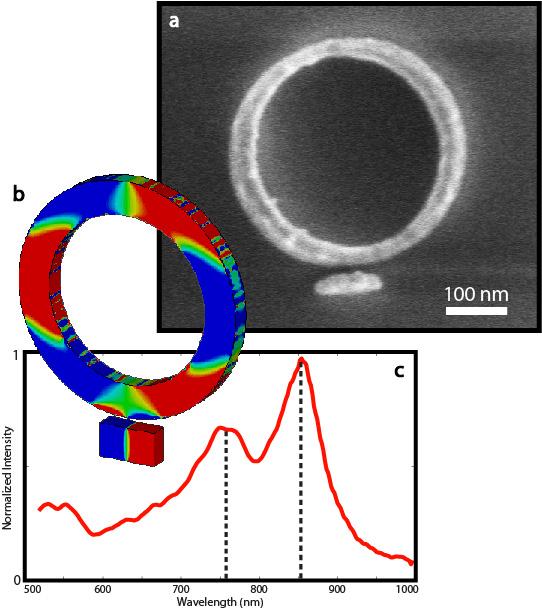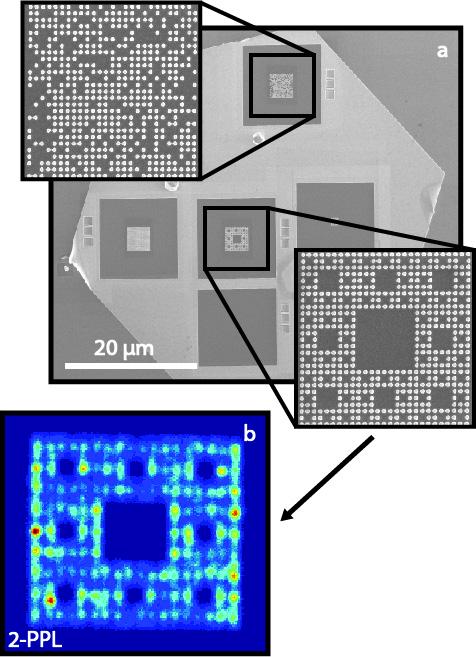The optical response of a plasmonic nano-antenna is governed by the dielectric constant of the material it is made out of and those of its surroundings. But more interestingly, its optical response is also governed by its geometrical shape. We perform spectroscopic measurements on single plasmonic nano-antennas and correlate their spectral behavior to their geometrical shape. Recently the plasmonics community has investigated the use of "Fano" resonances to increase the resonance strength of cluster of resonators. We suggest to resonantly couple a radiative bar mode to a non-radiative ring mode, so that the radiative losses are reduced and thereby increasing the systems resonant strength. The ring radius is engineered so that an hexapole ring mode with a low dipole moment is excited (Fig. 1b). Both the hexapole ring mode and the dipole bar mode have a resonance wavelength around 800nm. If put close together the spectral response shows splitting of this single resonance peaks into two resonance peaks at around 850 and 750nm, corresponding to a bonding and an anti-bonding mode (Fig. 1c). We investigate if the relative amplitude distribution of these splitted modes changes with respect to the order of ring mode which is excited.
Fig.1 a) Micrograph showing an SEM image of a bar ring structure, b) numerically calculated mode profile of an excited hexapole ring mode, c) spectral response of a ring bar antenna with a spacing of 20 nm. Plasmonic nano-antennas are well known for their ability to produce intense local electric fields. A nonlinear technique called 2-Photon Photoluminescence is used to visualize the local field distribution of a single nano-antenna and of nano-cluster. In order to probe and control the ultrafast spatiotemporal dynamics of nano-antennas and /or nano-clusters, we employ a spatial light modulator to tailor the spectral properties of the broadband excitation pulses (including phase, amplitude, polarization).
Fig.2 a) Micrograph showing a SEM image of a random nano-cluster and a Sierpinsky nano-cluster which are fabricated out of a single crystalline gold flake, b) 2-PhotonPhotoLuminescence image of a Sierpinsky nano-cluster. Lastly we apply near-field scanning optical microscopy (NSOM) techniques to study light propagation and localization in plasmonic nano-structures. This technique allows us to probe all the optical properties (polarization, amplitude and phase) of the local fields with sub-wavelength resolution. |


